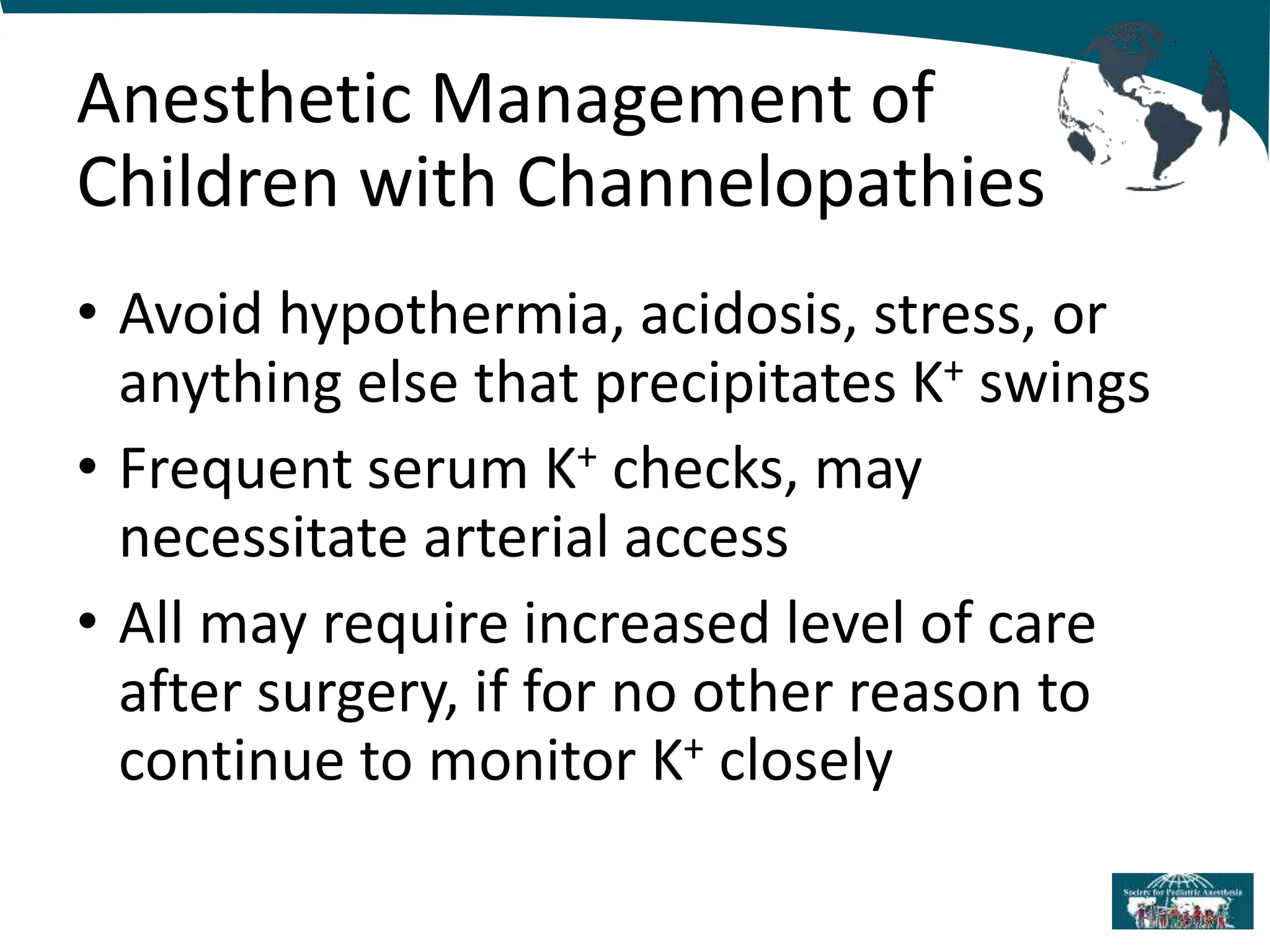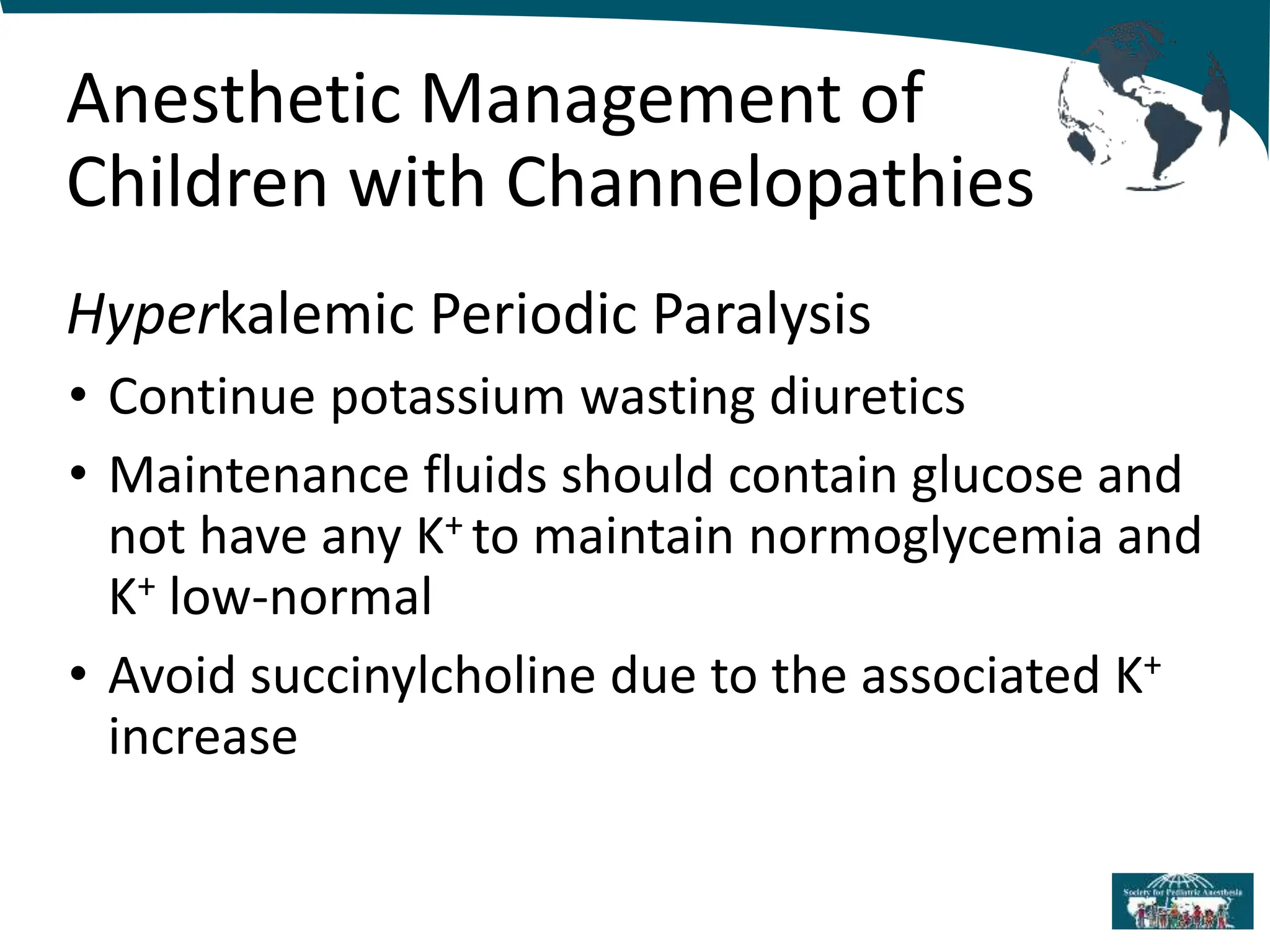This document discusses the anesthetic management considerations for patients with various neuromuscular disorders. It begins by classifying neuromuscular disorders by the site of pathology, such as disorders of muscle/muscle membrane, channelopathies, and neuromuscular transmission disorders. For each type of disorder, specific conditions are described in terms of presentation, pathology and anesthetic goals/precautions. The document emphasizes avoiding triggers for adverse events, such as succinylcholine, volatile agents and temperature fluctuations. Careful monitoring of vital signs and potassium levels is recommended due to risks of respiratory failure, arrhythmias and malignant hyperthermia for many neuromuscular disorders in the perioperative period.









































